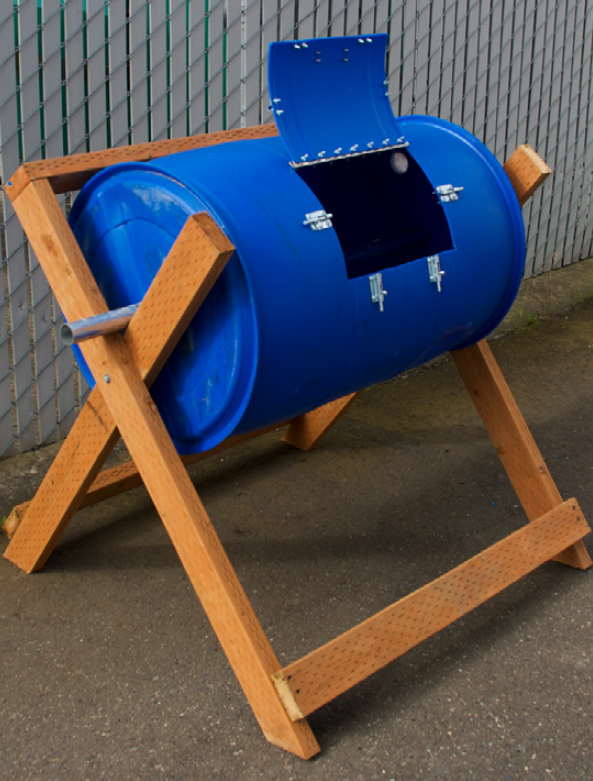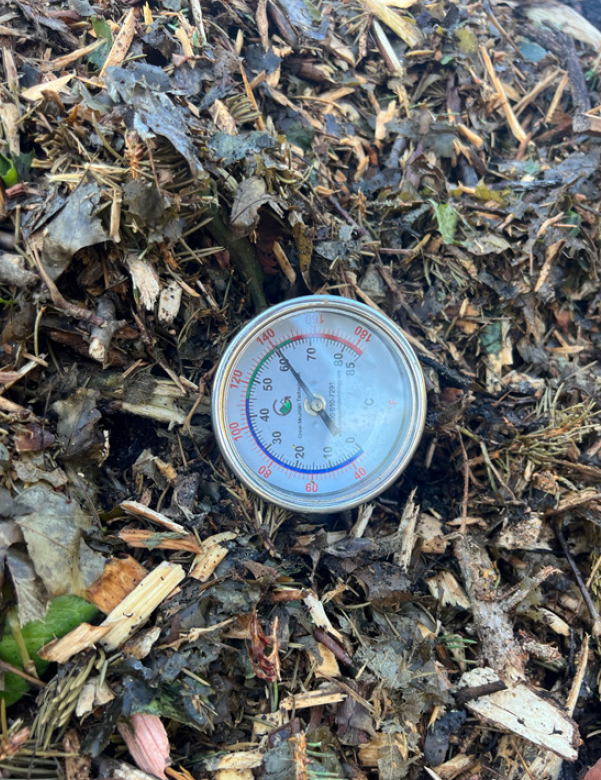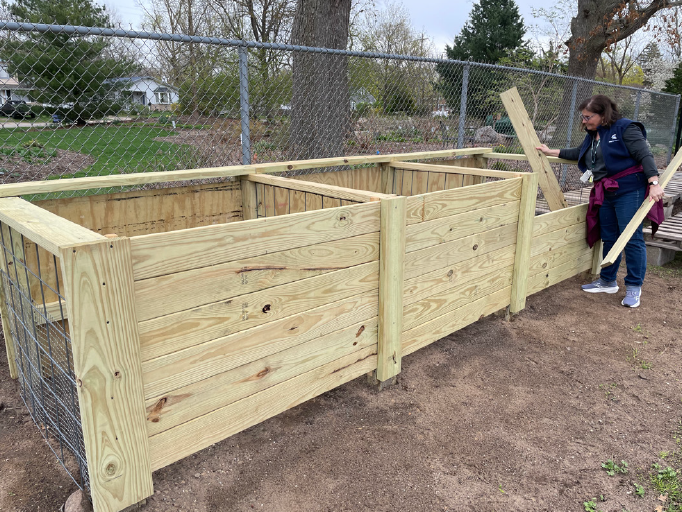
Composting: A Smart Gardening Practice that Recycles Yard and Garden Waste
DOWNLOADOctober 21, 2024 - Rebecca Krans and Eliza Hensel, Michigan State University Extension
What is composting?
Composting lets smart gardeners use chemistry to produce their own garden soil amendment. Some consider compost black gold! Compost is decomposed organic material such as leaves or vegetable scraps that, once broken down, turns into humus and resists further breakdown. Decomposition takes place through the work of microscopic organisms including fungi and bacteria, and larger organisms like earthworms, sow bugs, millipedes and more.
Why compost?
Composting is a smart gardening practice because it recycles and reuses valuable nutrients through organic matter returned to the garden. It is a free source of organic matter or natural fertilizer for your garden! Using compost in your garden improves soil health by:
- Improving tilth which refers to soil structure and aggregates
- Increasing water retention
- Creating air pockets for plant roots to grow
Where should I compost?
Make sure you place your compost in a convenient place, close to your garden and a water source. The ground needs to be level and well-drained so that water does not collect. Excess water will not allow enough air in, and this will make your compost smell bad. It is best not to place your compost pile in full sun as the sun will dry out the pile faster. It is the microorganisms that create the heat in the pile.
How do I compost?
You can buy one of the many different compost bins sold by retailers or create your own from various materials. The amount of time and effort you would like to spend recycling your garden waste will help you choose whether to use a “cold” or “hot” composting method. Make sure you can easily access one side so you can mix the pile from ground level.
Bin Options: There are a variety of methods to create a compost bin depending on available resources. You can purchase bin structures such as pallets to create walls, allow your pile to be free standing, use a liner to create structure, or you can use a tumbler for a slower cold compost method. Bin style all depends on what suits your yard and your needs.

Hot vs. Cold Composting
Hot composting usually produces compost within six to eight weeks. To be successful, you will need to provide the microorganisms in the pile with the materials they require to complete the process of decomposition: food, water, proper temperature, and oxygen. Usable food materials are referred to as “brown” or carbon source-C) or “green” (nitrogen source-N).
Cold composting is easier but slower. If you do not care if you get finished compost within one growing season, cold composting is for you. Simply pile up your yard and kitchen vegetative material as it becomes available and let nature take its course. If you mix it occasionally, and it has a moist sponge consistency, then you should have some usable composted material the following season.

Materials and Getting Started
Browns include any course, dried vegetative material such as leaves, twigs, straw, or dried grass stalks. It is best to mulch or shred materials before adding them to the pile as this speeds up decomposition.
Greens include kitchen wastes (except meat and dairy as these take longer to break down and tend to attract critters), weeds, and other green vegetative material. It is always a smart practice to pull weeds before they set seed, reducing the chances of spreading those weeds.
Directions: The recommended ratio of mixing browns (Carbon or “C”) to greens (Nitrogen or “N”) is 2:1 Carbon to Nitrogen or 3:1 Carbon to Nitrogen (C:N).
- Start your pile by piling up two times the volume of browns to greens. Top the browns with the appropriate ratio of greens. On top of this layer, sprinkle some existing soil or compost to supply the necessary microbes. Wet this layer so it is moistened, but not overly soaked.
- Continue to layer, adding soil or compost and watering this way until the bin is full. Make sure you thoroughly mix the pile weekly using a garden fork, moving the outer layer to the inside and vice versa. Your pile should not stink but have an earthy smell.
- Check the moisture level of the pile. Too much water in your pile can reduce the level of oxygen and invite oxygen-deficient bacteria and a foul When your pile is actively decomposing, a handful of the compost should have the consistency of a wet sponge with only a few drops of water able to be squeezed out.

How can I use compost?
Use your finished compost as a 3-inch layer of mulch around herbs and annuals, or a 6-inch layer around perennials, trees, and shrubs. Not only will it provide nutrients, but it will help decrease topsoil erosion, reduce evaporation from the soil surface and create a more even soil temperature. You can also mulch around or side dress your vegetables with the compost. Although composting takes extra effort and planning, the finished product is a free source of organic matter and nutrients that, when returned to your garden annually, will reward you with improved soil health and lush garden plants.
Composting FAQs
Is all bagged compost ‘created equal’? No, all compost is not created equal. Be sure to read the label carefully, and if possible inspect the product inside. Compost should be light and fluffy, smell earthy not stinky, and should be free of trash, maggots or invasive worms.
Can I use too much compost? Yes, it is possible to use too much compost. Compost should be used as an amendment to your soil, not the only material used to fill your beds. Planting directly into pure compost can be too strong for your plants.
Can I compost in the winter? Absolutely! Compost can happen all year long. The decomposition process may happen a bit slower in the winter months due to low temperatures slowing the process and cooling the pile, but the microbes will still get to work.
What if my plant material was diseased? Can I use that in my compost pile? While it is best to avoid diseased materials, if you do need to compost them, be sure to use a hot pile and ensure it reaches thermophilic conditions (3-5 days at >131°F) to kill off diseases.
What about putting weeds into compost? If adding weeds to your compost, make sure you pick them before they go to seed. Also, make sure they are not currently listed on the MI Invasive species list.
To continue learning, you can take our free, online master composter course that goes in depth on a variety of compost topics and methods, www.canr.msu.edu/courses/master-composter-online-course, or visit MSU’s www.migarden.msu.edu to view composting videos.
For more information on a wide variety of Smart Gardening topics, visit www.migarden.msu.edu or call MSU’s Lawn and Garden hotline at 1-888-678-3464.
Updated September 2024. This work is supported by the Crop Protection and Pest Management Program [grant no 2021-70006-35450] from the USDA National Institute of Food and Agriculture.



 Print
Print Email
Email





